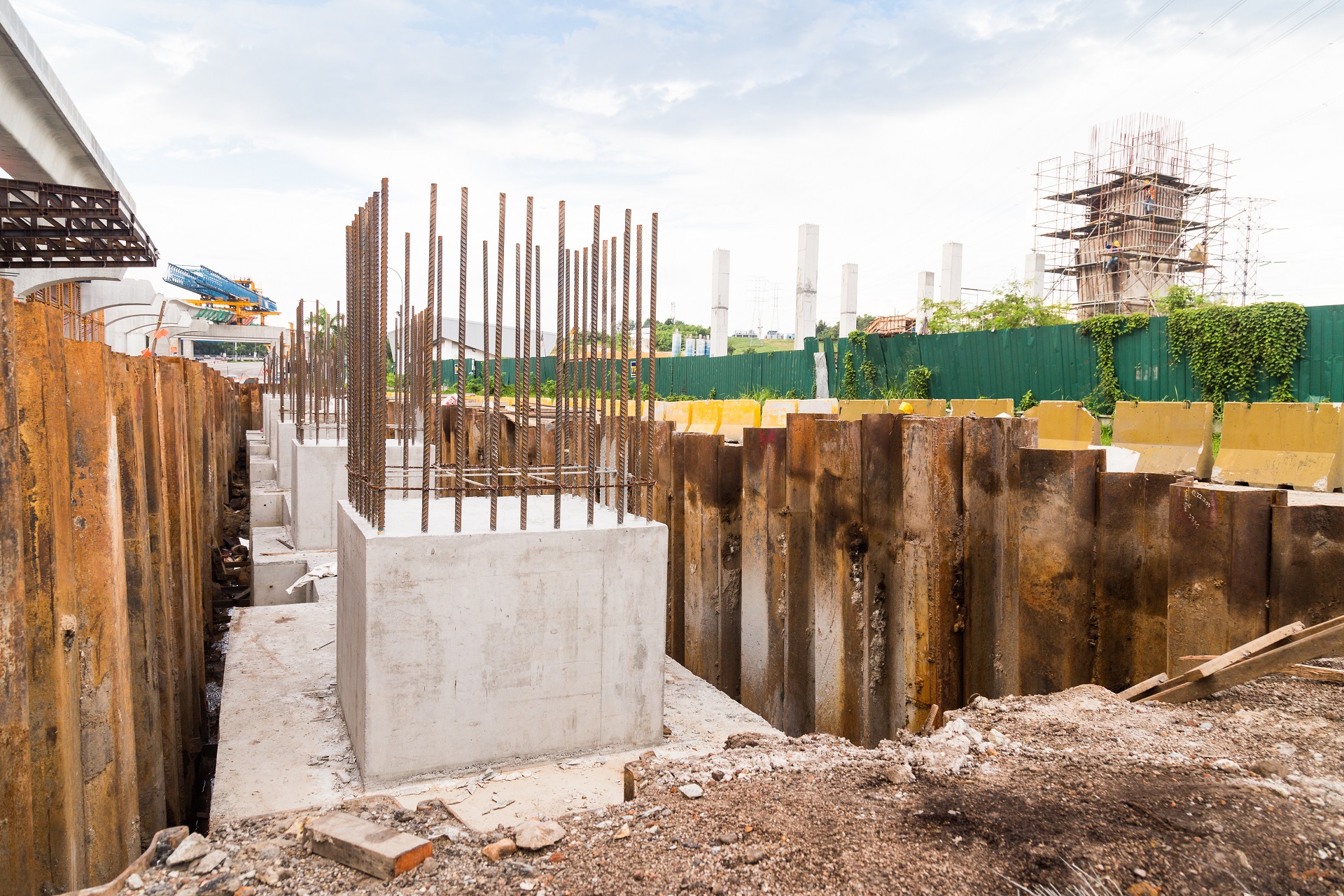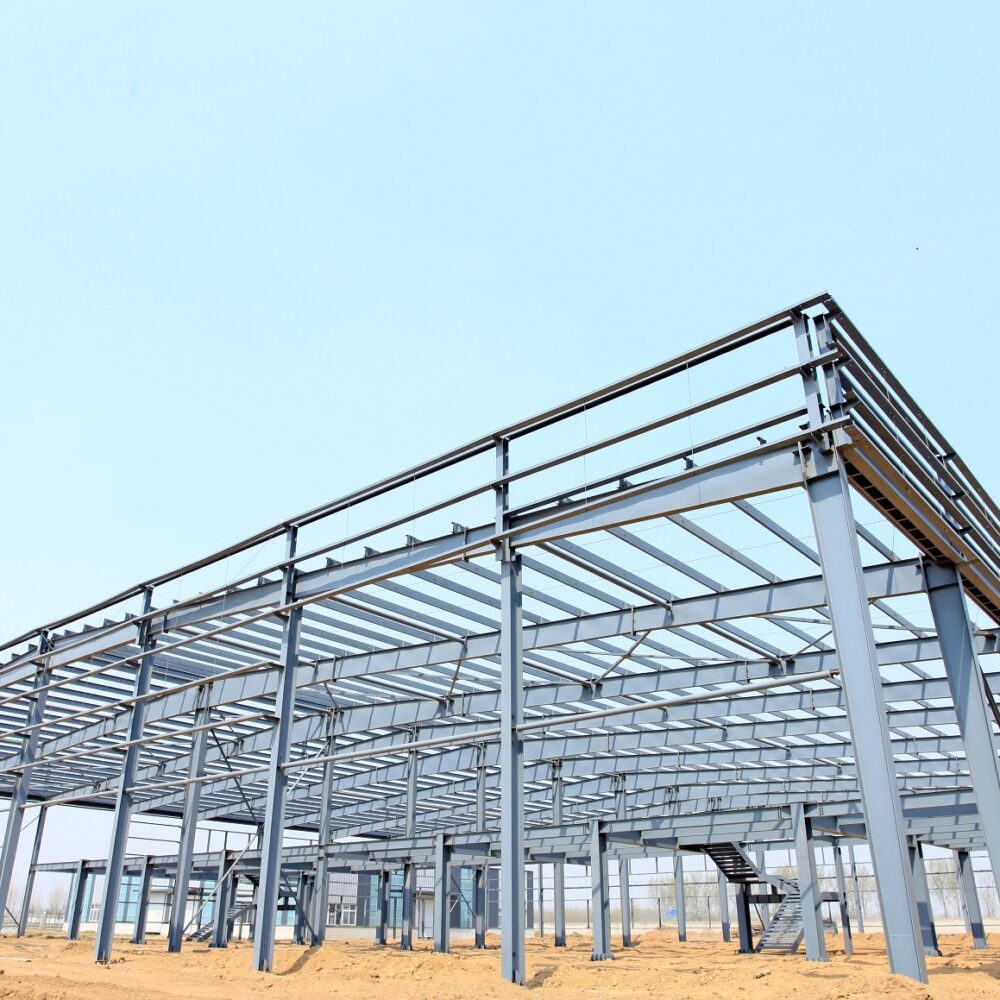
The foundation is a part of the structure that is one of the most important elements in the world of engineering, it even somewhat refers to civil engineering. This is because civil engineering is undeniably where most foundations are made. What exactly is the foundation? The foundation is a part of the whole structure and which, being in direct contact with the ground, ensures the stability of the whole building and thus is critical for its safety. The foundation is a structural element which transfers the impacts from the structural elements of the building above, in other words it transfer forces from the structure into the ground. It can be considered safe when it meets a number of requirements. Foundations are extremely interesting structural elements and can take different shapes depending on the type of structure they support, but also according to the properties of the ground into which they must safely transfer the loads involved.
Foundations for steel halls – properties
Foundations can be divided according to the shape, as point, linear and surface foundations. The shape of the foundation largely depends on the structural system it supports and, to some extent, on the ground conditions.
The second division criterion is the way the foundation is made. In this group, the indirect and direct foundations can be distinguished. Direct foundations are those that are placed shallow below the surface of the ground (usually just below the frost zone, i.e. approximately 1.0-1.5 m below the ground level). This type of foundation is possible when the soil has sufficient bearing capacity and it can be assumed that the load will not cause excessive settlement. If shallow soil is found to be non-bearing or weak, intermediate foundations are required. The intermediate foundations consist of deep-driven columns (piles) reaching down to the ground which can be considered load-bearing. Depending on the technology applied, the piles can sometimes be up to a dozen metres deep. This is most often the case of very heavy and/or tall structures and, therefore, requiring a great deal of ground stabilisation, such as high-rise buildings, multi-storey masonry and reinforced concrete buildings on weak soils, or bridge abutments.
Intermediate foundations are seldom used, for economic reasons, for lightweight buildings such as steel halls. Steel hall foundations do not transfer such significant forces into the ground and, for this reason, direct foundation, which requires a shallower excavation and does not require specialist equipment (drilling rigs or pile-driving machines required for the intermediate foundations), means that in case of weak soil, it is often possible to construct direct foundations under the hall with adequate reinforcement and/or compaction of the soil.
Steel halls are usually large structures for which it makes economic sense to design the main structural system as a slender frame. This is of considerable importance for how the foundations for the steel hall are formed. Since steel halls support the roof structure mainly by columns with a fairly large spacing (the spacing is often 6×12 m or more), it is reasonable to make point foundations under each column separately – this type of foundation is called a footing. Typical single footing can range from 1.5 x 1.5 m to 4.0 x 4.0 m (length x width) and more, depending on column spacing, hall height, building location (wind strength) and soil properties. Foundation footings are made of concrete with properly designed and applied reinforcement. See the following section to find out more on the requirements for the materials used, construction methods and expected durability.
Foundations for steel halls – technical requirements
The footing is a reinforced concrete element and therefore consists of concrete reinforced with steel bars. The reinforcing bars are bent into an appropriate shape to form a grid for the upper and lower levels of reinforcement. The footing supporting the column is interesting in that, from a calculation perspective, it resembles and works just like a section of a reinforced concrete floor resting on a column, the only difference being that the structure is turned upside down.
But that is essentially where the similarities end. Foundations are structures that are buried in the ground and are therefore subject to the adverse effects of compounds in the soil and high moisture or even pressurised ground water. Reinforced concrete foundations are required to have an adequate water tightness to ensure durability. This water tightness is ensured by an appropriate class of concrete and special additives improving it (reducing concrete porosity) added at the stage of concrete mix production. In addition, a sufficiently large concrete cover of the reinforcing bars is required to ensure that the reinforcing steel has an adequate service life. The value of the concrete cover of the reinforcing bars in the foundation (in simple terms) is at least 50 mm.
Cost of steel hall foundations
We already know what foundations for steel halls are and what requirements are placed on them. It is worth bearing in mind that the cost of foundations for steel halls is strongly dependent on soil conditions. Soil conditions not only determine whether a direct foundation is possible without additional reinforcement or soil replacement. Sufficiently load-bearing soil will make the footings smaller and therefore cheaper to build. What is more, soil conditions with a low ground water level, i.e. no water overflow into the excavation, make it possible to avoid extra cost of temporary ground drainage in the area of the foundation works. Ultimately, the cost of foundations for a steel hall is also affected by the geometry of the hall itself. Commercecon design team knows that an appropriate adjustment of spacing of columns, height of the hall and other associated components will allow not only to maintain the investor’s desired functional advantages but for optimising the cost of the above ground and underground structures, and thus reduce the cost of foundations.
You will find out more in the article: How much does it cost to build a steel hall vs. a brick hall?



